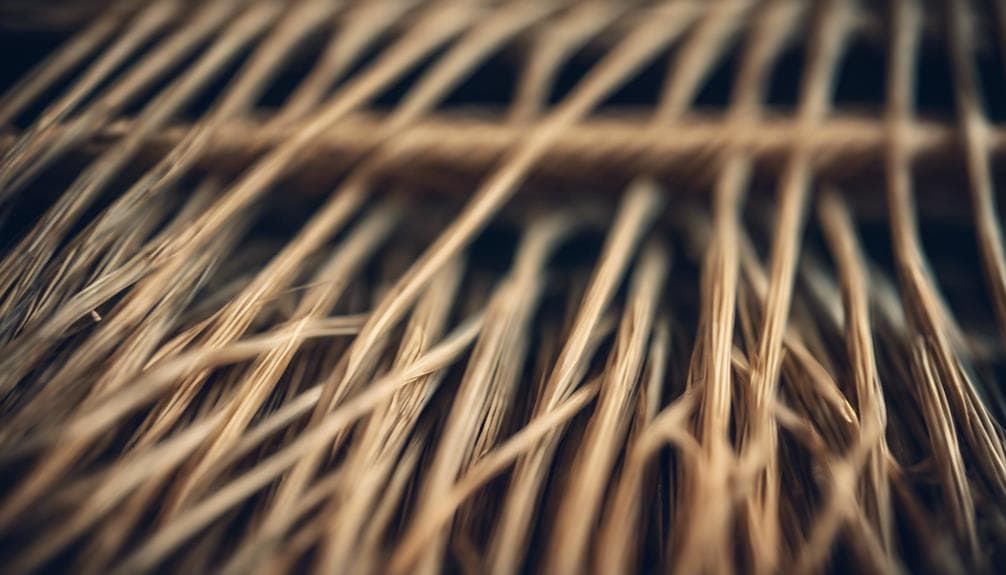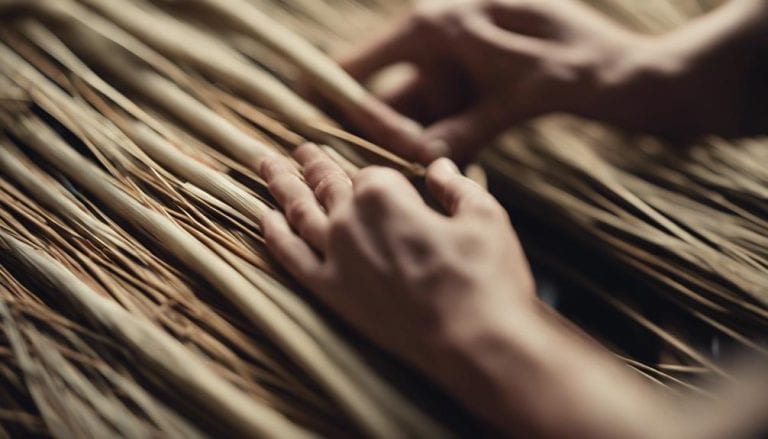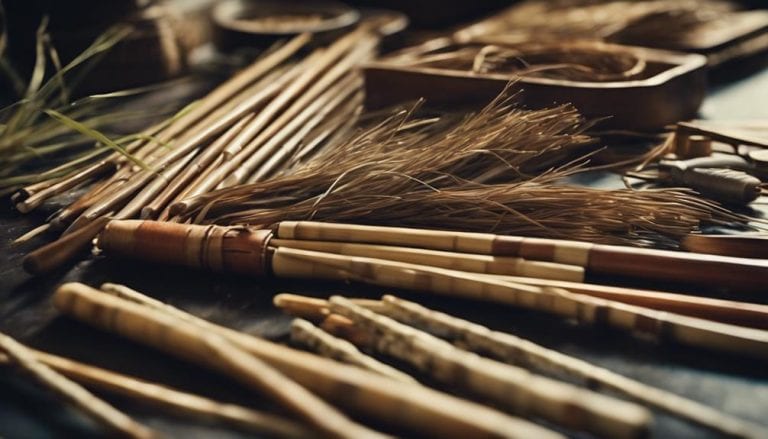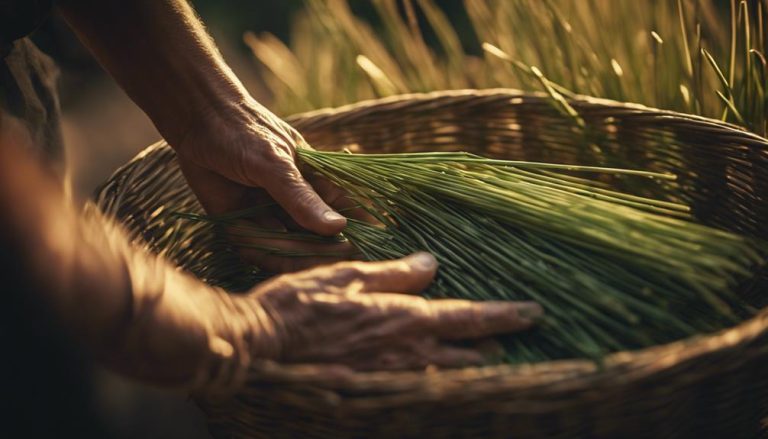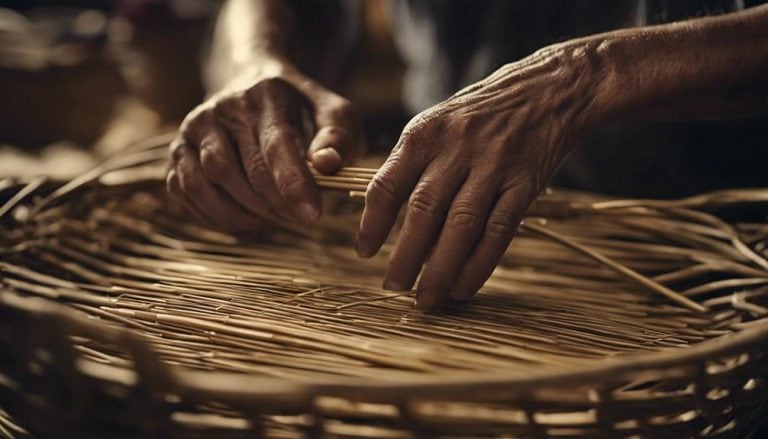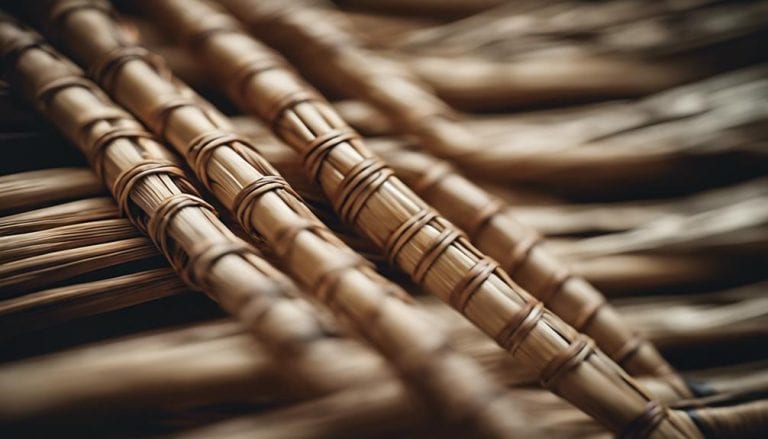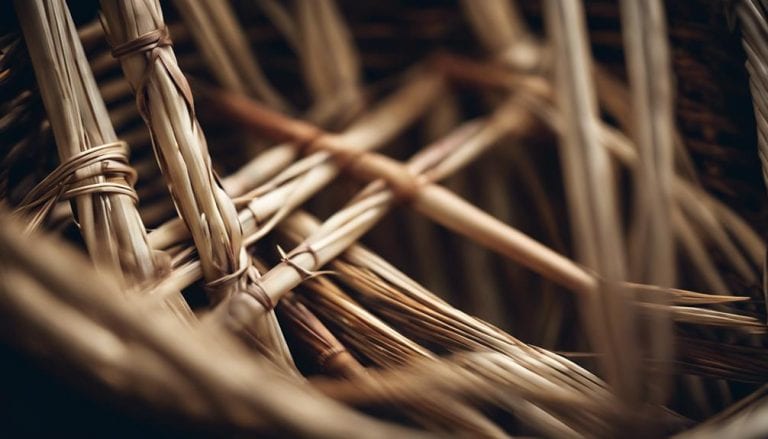Differentiating Rush Reeds and Danish Cord
As I unravel the intricate threads between rush reeds and Danish cord, it becomes apparent that these weaving materials hold distinctive qualities that set them apart. Imagine a tapestry of differences waiting to be explored, each strand revealing a unique aspect of craftsmanship and durability.
But before we untangle the intricacies of these chair-weaving essentials, let’s delve into the world of fibers and techniques that make them stand out in furniture design.
Distinguishing rush reeds from Danish cord involves analyzing their unique textures and structures. Rush reeds are long; flexible plant stems are used as a natural material for making musical instruments like clarinets. Danish cord consists of tightly woven fibers made from flax or other materials.
Key Takeaways
- Danish cord offers intricate patterns and durability, while rush reeds provide a rustic, natural look.
- Danish cord surpasses rush reeds in strength and longevity, enhancing furniture aesthetics with luxury.
- Danish cord is known for its longevity and resilience, requiring occasional tightening for maintenance.
- Rush reeds are sourced from renewable materials with minimal environmental impact, promoting sustainability in furniture production.
Origins of Rush Reeds and Danish Cord
The unique origins of Rush Reeds and Danish Cord are emerging from the depths of history, shedding light on the natural roots and modern innovations that define these weaving materials. Rush reeds, rooted in tradition, hail from natural sources like bull rushes and seagrass. They have been a staple in traditional weaving, especially classic chair techniques.
On the other hand, Danish Cord, a modern substitute, is crafted from twisted kraft paper, a synthetic material chosen for its durability and consistency. This shift from natural to synthetic materials highlights the evolution in the weaving industry, where tradition meets innovation. While Rush Reeds have a history steeped in the natural world, Danish Cord represents a leap into modernity, providing strength and longevity.
The transition from natural rush reeds to the synthetic Danish Cord reflects a broader trend in the furniture industry towards modern materials that offer reliability and visual appeal. This juxtaposition of natural vs synthetic and traditional vs modern showcases the dynamic nature of weaving materials, constantly adapting to meet the needs of contemporary design.
Materials Used in Weaving
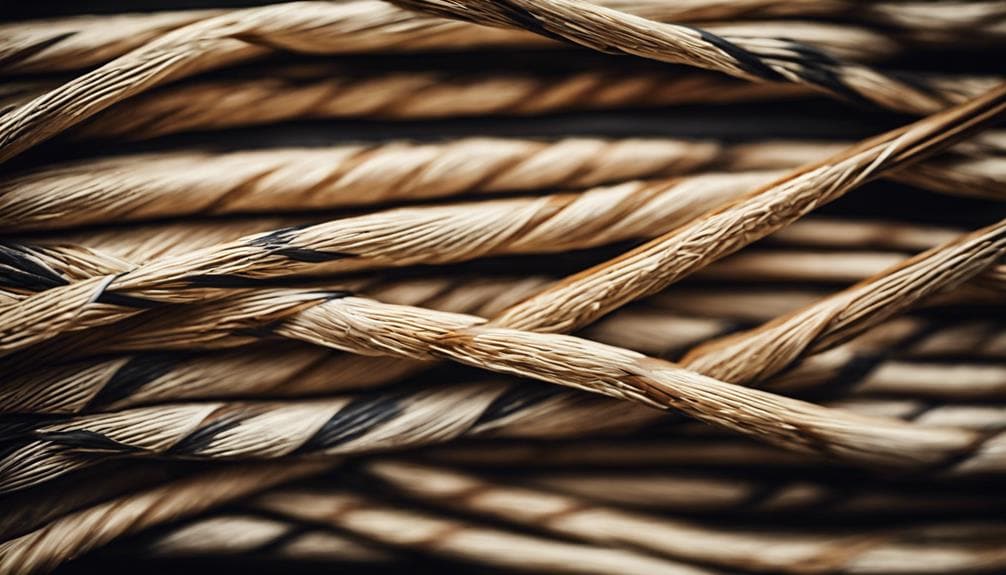
Weaving materials reveal a fascinating contrast between the traditional origins of Rush Reeds and the modern composition of Danish Cord, emphasizing the diverse textures and durability each material brings to the art of weaving.
- Color Options: Danish cord offers a wide range of color choices due to its ability to be easily dyed, providing versatility for various design preferences. In contrast, fiber rush typically comes in natural brown tones, limiting color customization options.
- Texture Differences: with its tightly twisted and thicker composition, the Danish cord creates a textured appearance that adds depth to the weaving patterns. On the other hand, fiber rush, being thinner and smoother, offers a more delicate texture, suitable for specific weaving techniques that require a flatter surface.
- Sustainability: The Danish cord, made of durable kraft paper, is known for its longevity and strength, contributing to sustainable weaving practices through its ability to withstand wear and tear. While thinner and less durable, the fiber rush is still eco-friendly due to its natural material composition, promoting environmentally conscious weaving choices.
Weaving Techniques Compared
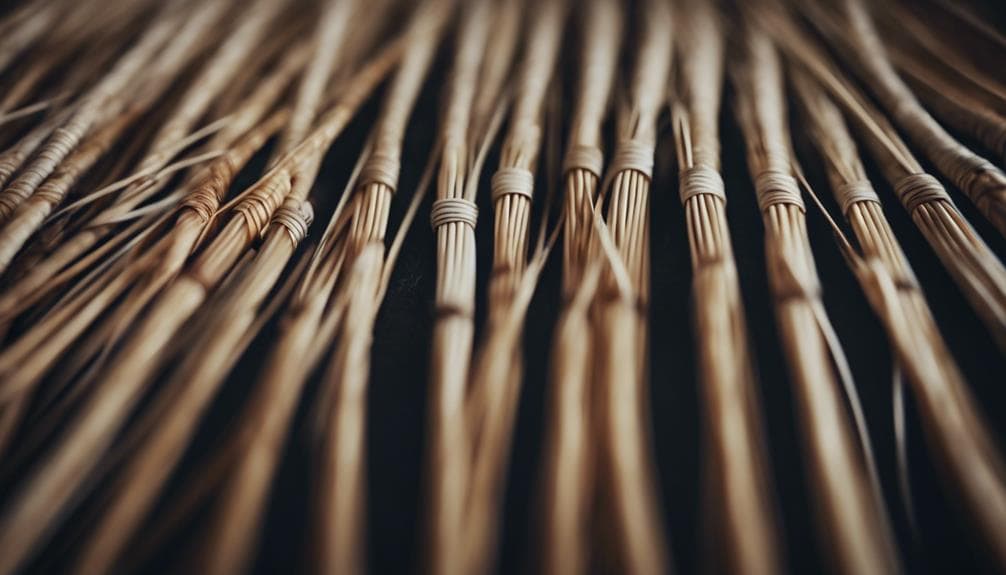
Exploring the intricacies of traditional Rush Reeds and contemporary Danish Cord weaving techniques reveals a captivating contrast in their approaches and intricacies. Danish cord weaving is known for its intricate patterns, adding a unique flair to the final product.
In contrast, Rush reeds typically employ a common basket weave pattern, focusing more on simplicity. During Danish cord weaving, hooks are strategically inserted around the perimeter of the seat, allowing for precise tension control and continuous tightening throughout the process.
This method ensures a sturdy and uniform finish. Both Rush reeds and Danish cord require careful attention to detail, but Danish cord frames tend to be broader, enhancing the overall aesthetic with a modern touch. Below is a comparison table highlighting the key differences in weaving techniques between Rush reeds and Danish cord:
| Aspect | Rush Reeds | Danish Cord |
|---|---|---|
| Tension Control | Requires precise tension control | Emphasizes tension control for durability |
| Weave Patterns | Common basketweave pattern | Intricate patterns for a unique look |
| Perimeter Hooks | Not typically used | Utilizes perimeter hooks for tightening |
| Continuous Tightening | Required throughout the process | Ensures uniformity through tightening |
Durability and Longevity
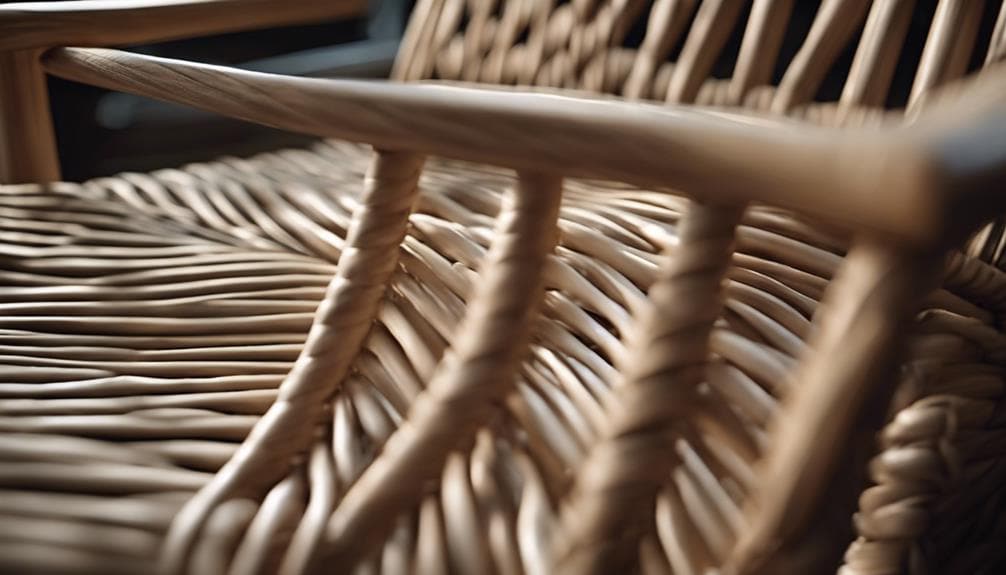
When considering the durability and longevity of Rush reeds and Danish cord, Danish paper cord stands out for its thicker construction and longer fibers, making it a superior choice for long-lasting furniture. Danish paper cord surpasses fiber rush in strength comparison and wear resistance, ensuring your furniture stays sturdy and beautiful for years.
Here are three reasons why Danish paper cord is the top choice for longevity:
- Thicker Construction: The thicker build of Danish paper cord enhances its durability, providing a strong foundation that can withstand daily use without wearing out quickly.
- Longer Fibers: With longer fibers, the Danish paper cord offers superior wear resistance, making it ideal for high-wear areas where traditional rush reeds might falter.
- Increased Longevity: The combination of thicker construction and longer fibers in Danish paper cord ensures that your furniture remains strong and visually appealing over the long haul, outlasting fiber rush alternatives.
Design Aesthetics and Versatility
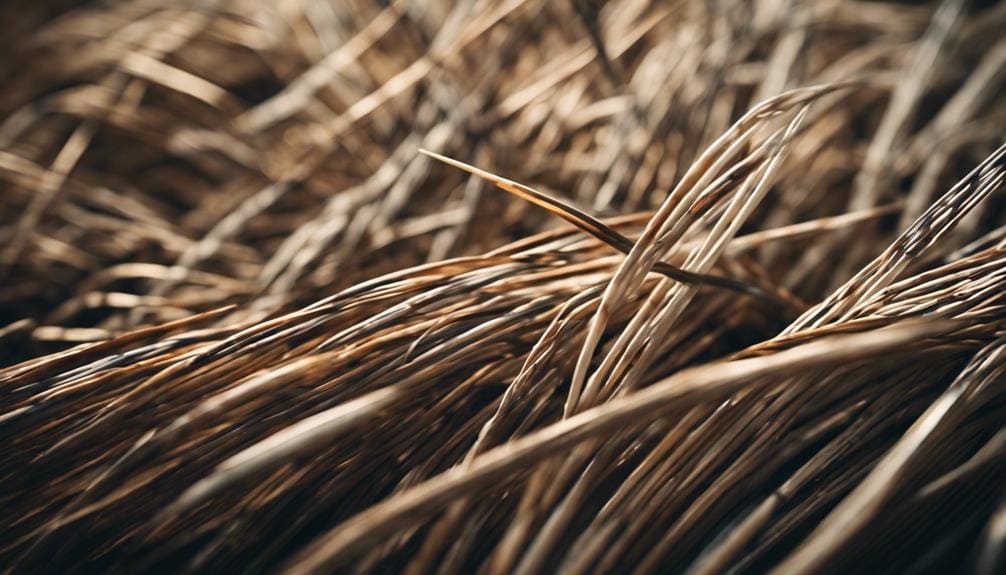
Danish cord’s intricate texture and versatile nature elevate furniture aesthetics to new heights, setting it apart from the smoother, flatter appearance of rush reeds like fiber rush. The strength of the Danish cord lies in its durability and ability to adapt to diverse weaving patterns, offering endless design possibilities.
The textured look of Danish cord, with its defined plies resembling elegant rope when expertly laced, adds a touch of sophistication to any piece of furniture. In contrast, while flexible, rush reeds like fiber rush lack the visual depth and robustness that Danish cord effortlessly provides.
Regarding design aesthetics, the Danish cord can withstand high-wear areas while maintaining its beauty and strength over time. The texture contrast between Danish cord and rush reeds is stark, with Danish cord exuding an unmatched sense of luxury and resilience. For those seeking furniture that marries durability with intricate design, Danish cord emerges as the clear choice, promising longevity, versatility, and timeless elegance.
Maintenance and Care Tips
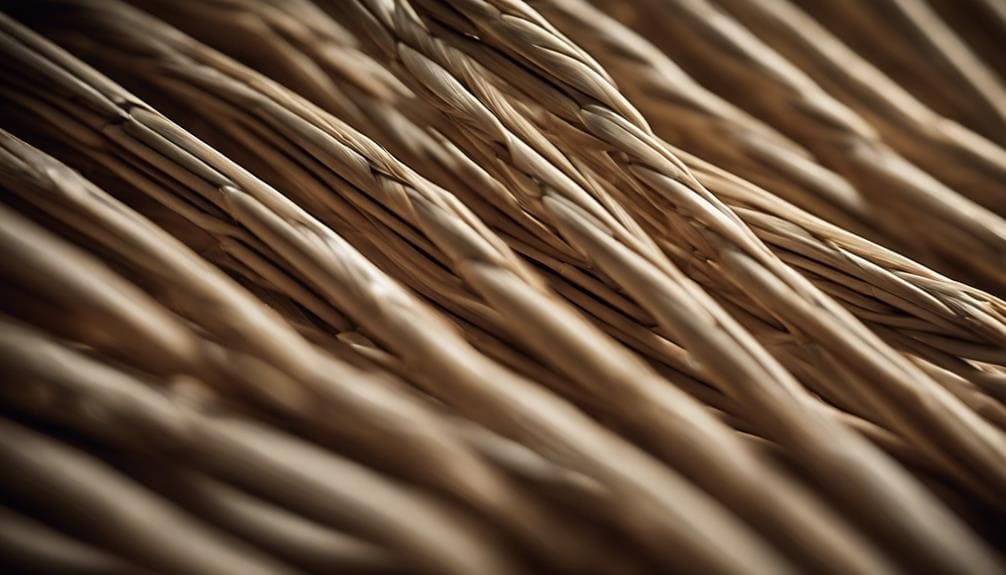
Taking diligent care of your Danish cord furniture ensures its longevity and beauty for years. To preserve the integrity of your woven pieces, here are some essential maintenance and care tips:
- Regular Cleaning: Dust your Danish cord furniture regularly to prevent buildup. Use a soft brush attachment to remove dust and debris gently. To clean the affected area, dampen a cloth with mild soap and water for spills or stains. Avoid harsh chemicals that can damage the cord’s integrity.
- Preservation Methods: Protect your Danish cord furniture from direct sunlight exposure, as prolonged sunlight can cause fading and weakening of the cord. Inspect your furniture periodically for signs of wear or damage, addressing any issues promptly to prevent further deterioration.
- Professional Maintenance: If your Danish cord furniture requires repairs beyond your expertise, consider seeking professional maintenance services. Professional restorers can reweave damaged areas, reinforce weak spots, and ensure your furniture remains in top condition for years.
Cost and Availability
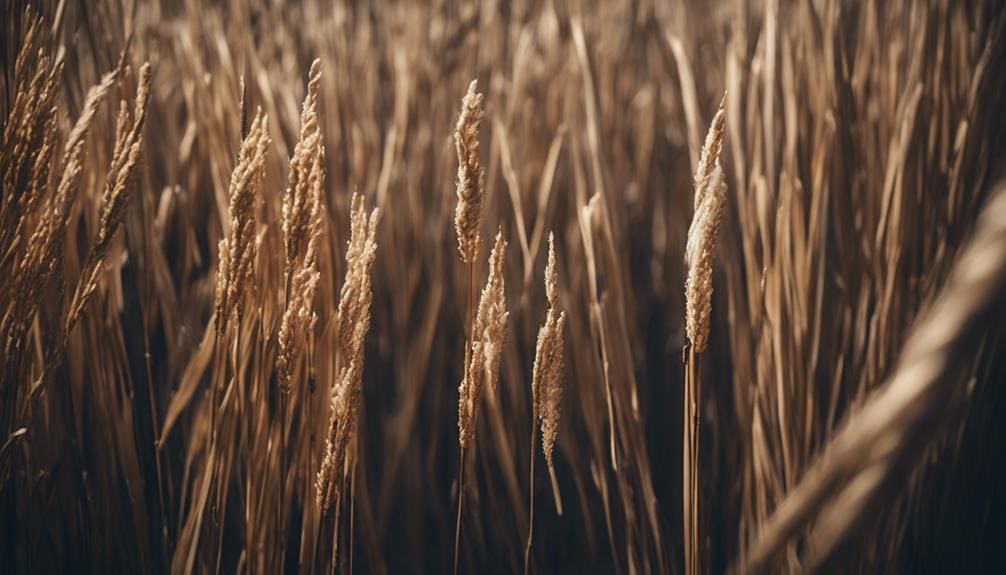
To fully appreciate the value of Danish cord and rush reeds, one must explore their cost and availability in the market. When comparing the two materials, Danish cord is generally pricier due to its superior quality and longevity. However, rush reeds offer a more budget-friendly option and are easier to find in craft stores and online retailers.
On the other hand, Danish cord may pose sourcing challenges as it often requires specialized suppliers catering to furniture restoration and weaving materials. This can lead to limited availability in some regions, resulting in higher shipping costs for those seeking this premium material.
| Materials | Cost Comparison | Availability |
|---|---|---|
| Danish Cord | Higher priced | Limited |
| Rush Reeds | Budget-friendly | Widely available |
Frequently Asked Questions
What Is the Difference Between Rush and Danish Cord?
Rush and Danish cord differ in materials and durability. Rush reeds are prone to breakage, while Danish cord boasts longevity. The cord’s strength and textured appearance make it a prime choice for chair weaving, offering superior quality.
What Is the Difference Between Unlaced and Laced Danish Cord?
Choosing between laced and unlaced Danish cord boils down to weaving preferences. Laced cord is pre-woven, saving time on intricate weaving, while unlaced offers creative freedom. Customization and efficiency drive the decision, catering to individual needs.
What Are the Different Types of Danish Cord Weaving?
I explore diverse Danish cord weaving types. Various color options allow artistic freedom. Durability is key; weaving techniques impact maintenance. Each style unveils a distinct journey of creativity and liberation, weaving stories within intricate patterns.
What Is the Difference Between Natural Rush and Fiber Rush?
Natural rush and fiber rush differ in material origin and durability. Rush weaving techniques showcase the authenticity of natural rush, while fiber rush benefits ease rush chair restoration with simpler repairs of fiber rush seats, catering to diverse weaving projects.
Conclusion
In the world of chair weaving, the choice between rush reeds and Danish cord is crucial. In contrast, rush reeds may seem like a quick fix, but the durability and elegance of Danish cord cannot be underestimated. So next time you decide between the two, remember – sometimes the rush isn’t always the best option. Quality and longevity will always win in the end.

